common brown lemur
eulemur fulvus
Vulnerable
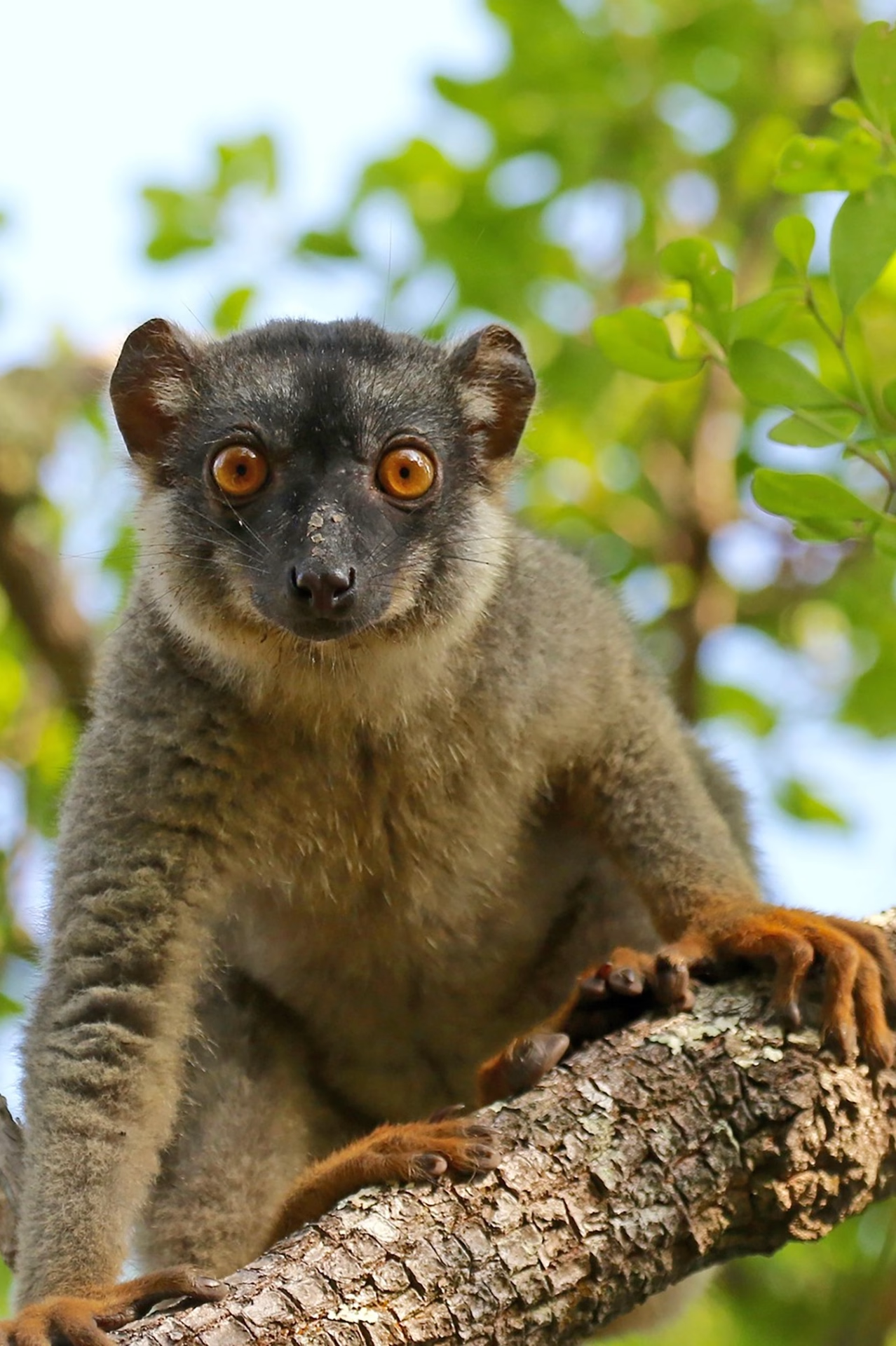
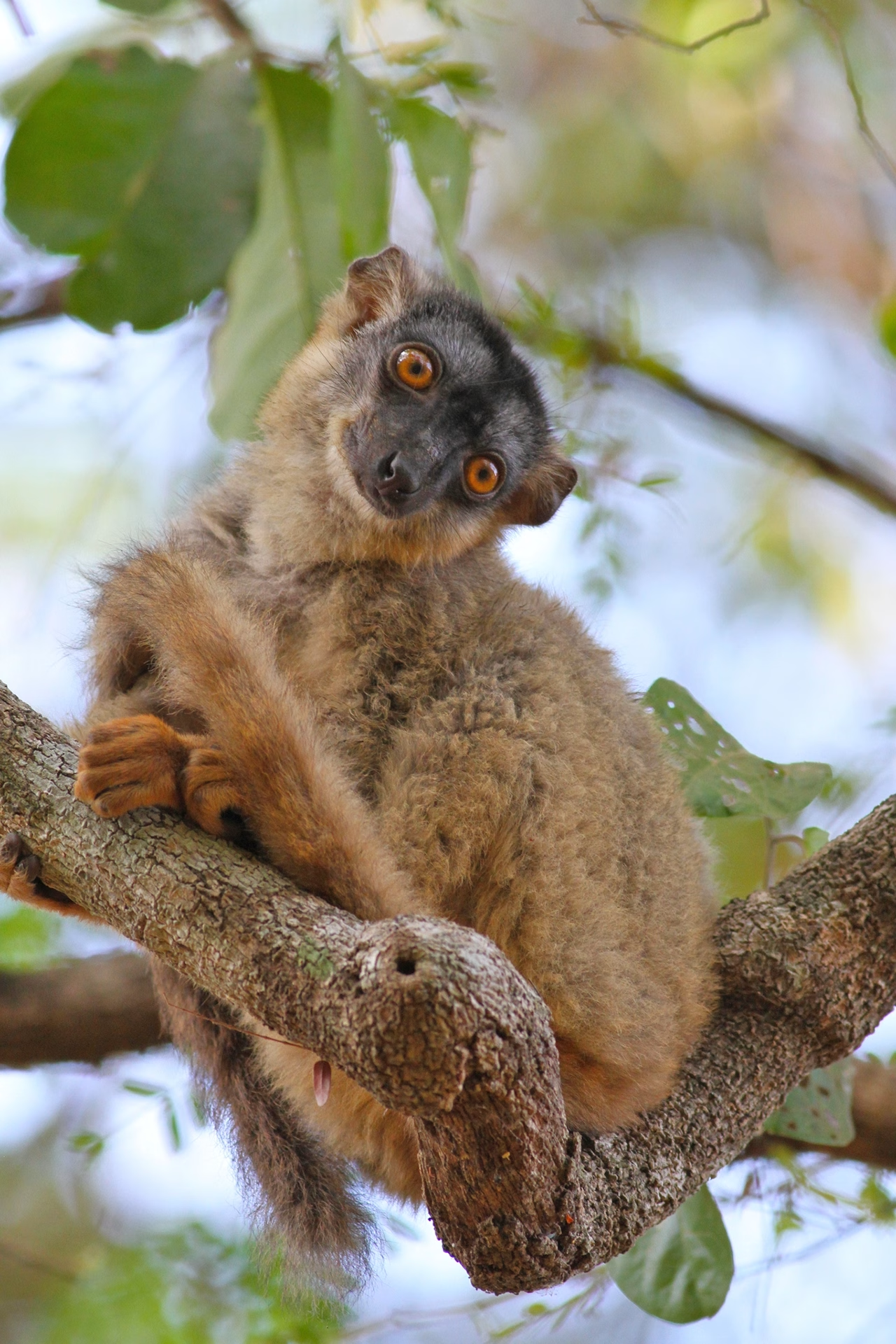
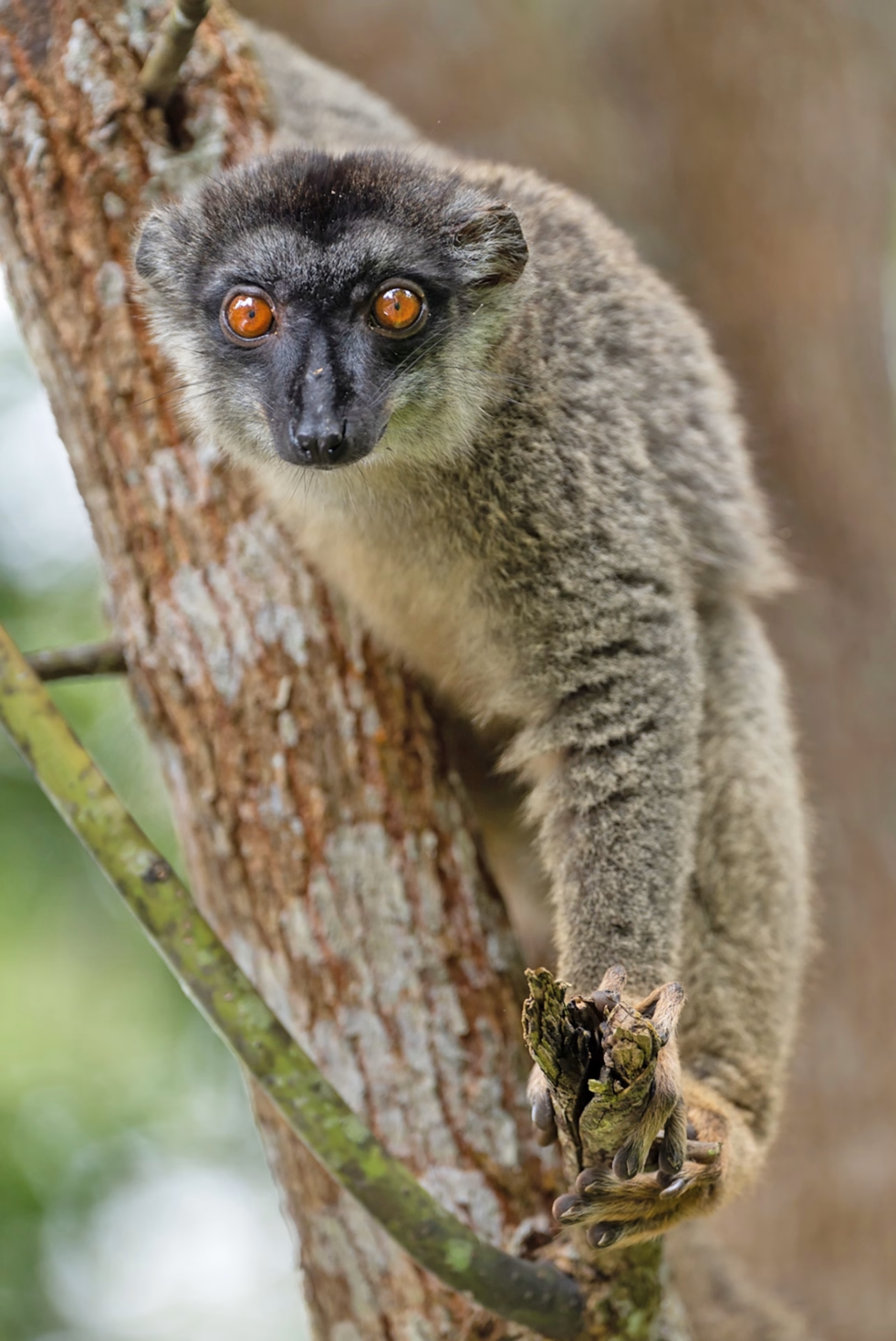
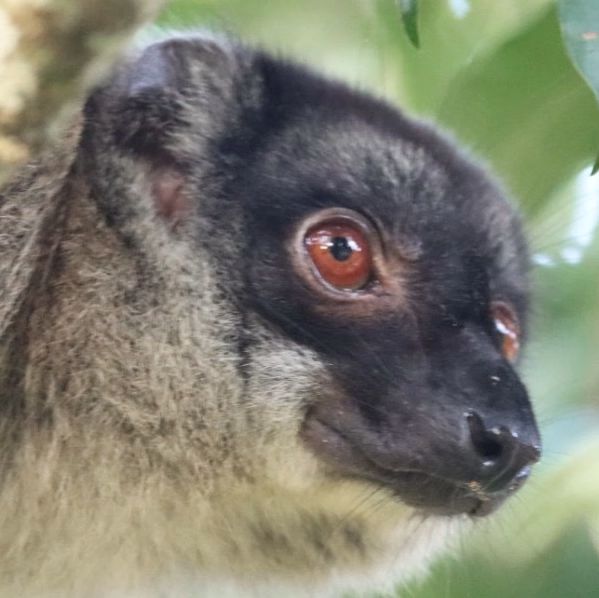
STATUS
Vulnerable
SIZE
Body length: 16 to 20 in (41 to 51 cm)
Weight: 4 to 6 lbs (1.8 to 2.7 kg)
LIFESPAN
About 25 years
HABITAT
Dry deciduous forest
Montane forest
Rainforest
DIET
Fruit, leaves, flowers
LIFESTYLE
Cathemeral
Mostly arboreal
Social
REPRODUCTION
Gestation: about 3 months
Young: 1
THREATS
Habitat loss
Deforestation for agriculture and illegal logging
Being hunted as a food source

INTERESTING FACTS
They have been noted to consume more than 100 types of plants and are able to tolerate the high levels of tannins and alkaloids in the leaves and unripe fruits they eat.
Both males and females have the same coloring and are about the same size.
Common brown lemurs, like all lemurs, have modified lower incisors specialized for grooming. Tall, slender, and evenly spaced, this “toothcomb” helps to clean the hair. Resting individuals are commonly seen licking and combing one another’s fur.
One form of communication is rubbing their wrists and chest on surfaces to leave behind scent marks that relay a variety of information about the individual.
Characteristics
These slender and elegant lemurs have dense, soft, brown or brown-gray fur. Males and females have the same coloring—a characteristic unique to this Eulemur species. Their long, bushy tail is the same length as the body. The fur on the head and snout is black, which contrasts with their bright red-orange eyes. Their legs are long and muscular, a useful feature that allows them to take long leaps and appear as if they were flying between branches. Opposable thumbs and toes give them a secure grip on branches.
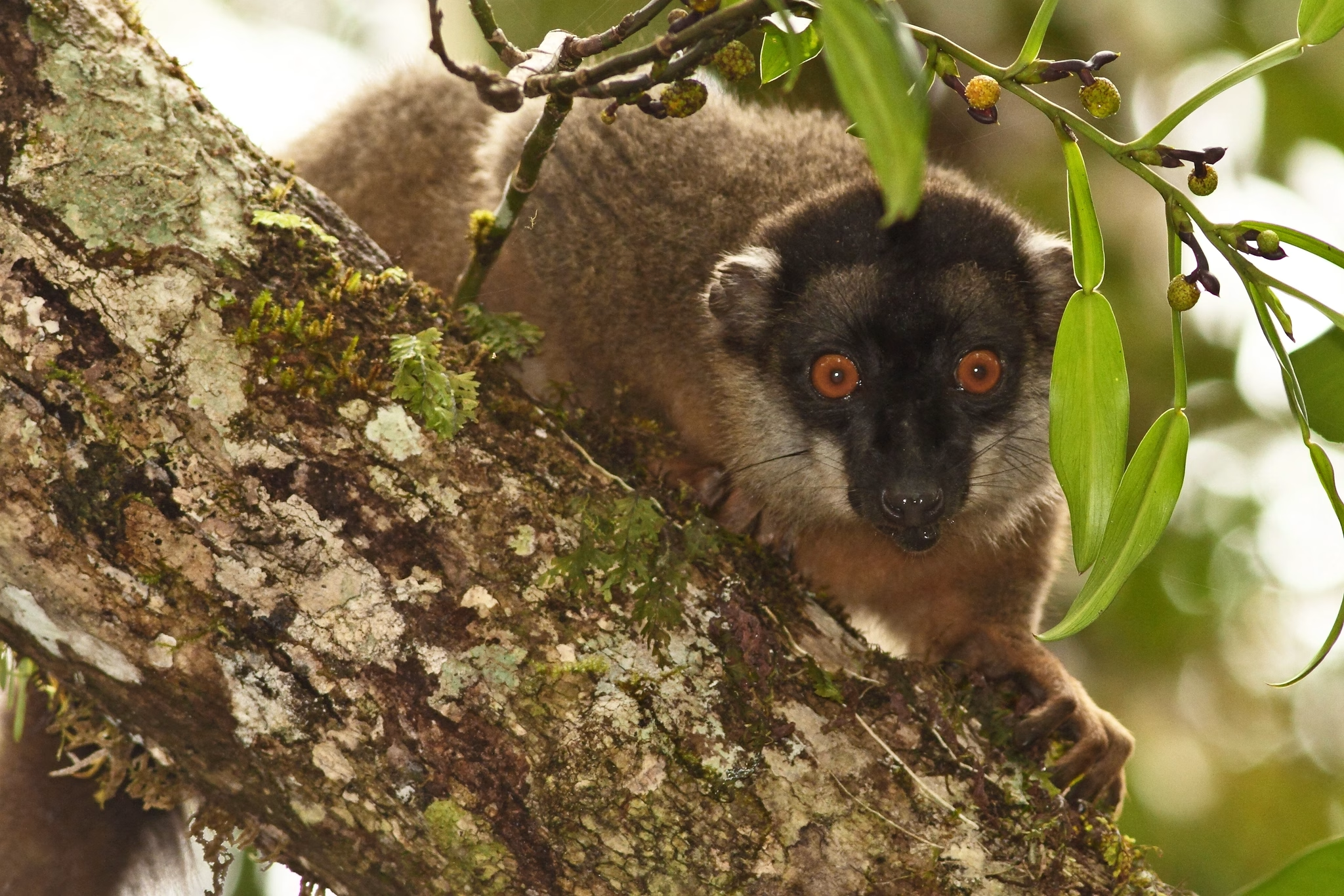
Foods and Feeding
The brown lemur’s diet consists of fruit, mature leaves, young leaves, and flowers and varies during the year, depending on availability. Nearly 70% of the diet is fruit, but in the dry season, when fruit is more scarce, they mainly eat leaves. Brown lemurs have been observed to feed from about 100 different plant species, although they consistently use only about 15 to 20 species.
Common brown lemurs have the useful ability to consume leaves and immature fruit that contain high levels of tannins and alkaloids, chemicals plants produce as a defense that are toxic to many animals. As a result, many other lemurs and other species avoid eating these plants. Because common brown lemurs are resistant to the effects of the chemicals, they have access to food resources that other animals can’t eat, giving the brown lemurs an advantage.
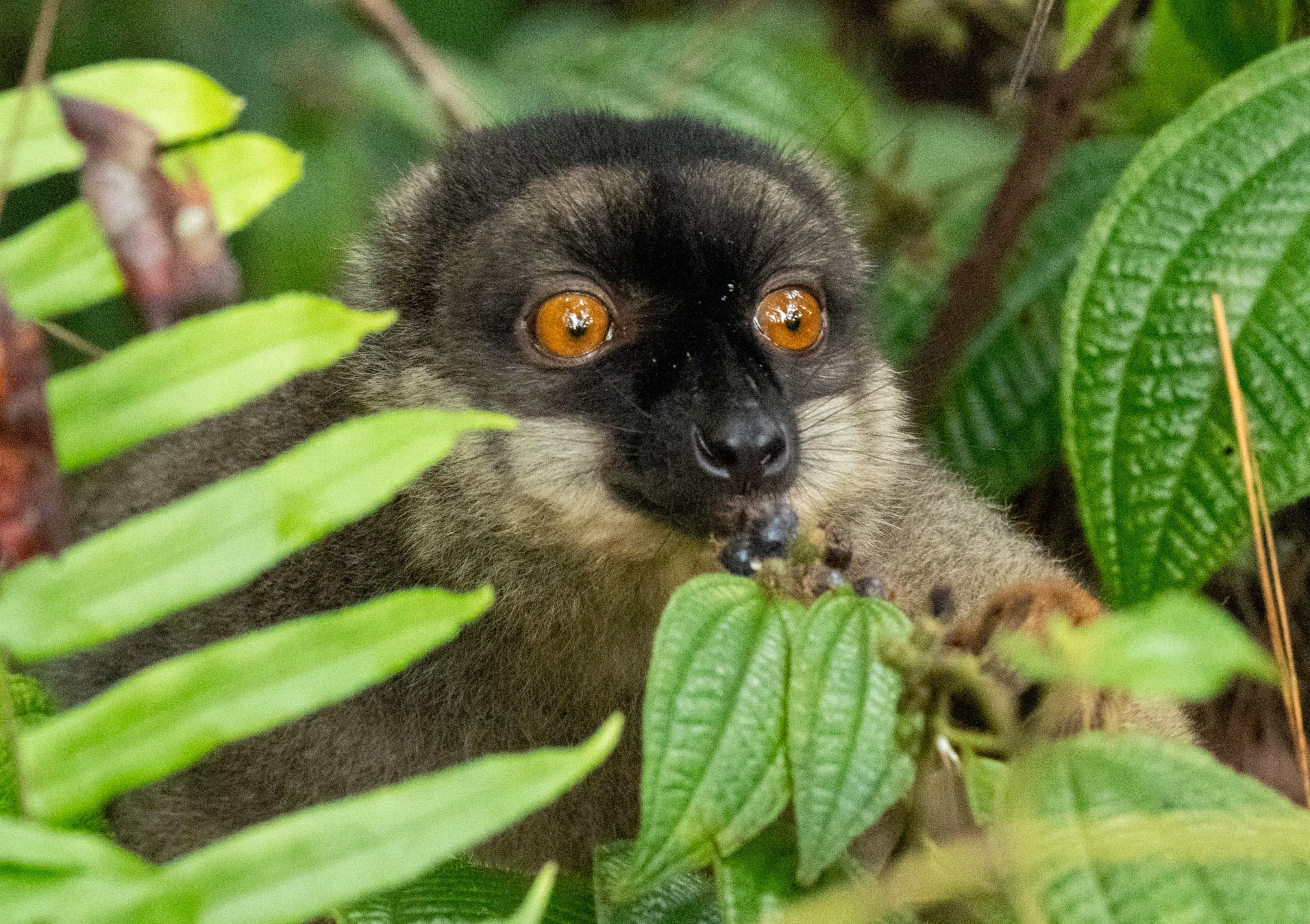
Behavior
Common brown lemurs are cathemeral, meaning they are active both during the day and at night throughout the year. Nighttime activity increases when the moon is bright, which allows them to detect predators and locate food more easily. They are generally less active when temperatures are higher.
These lemurs are early risers, and the groups tend to have their first meal by mid-morning. After eating, they rest for a couple of hours and may be seen lying on branches with their stomach exposed to the warm rays of the sun. They resume foraging around noon, then alternate between foraging and resting until evening or as long as light allows.
They generally don’t travel far each day, and their home range averages 1.75 to 2.5 acres. However, in dry or disturbed habitats, they have to travel farther to find food items they need and prefer. Rather timid and shy, brown lemurs are not territorial, and unlike other lemurs, males do not patrol borders of an established location. They prefer to maintain spatial distance from other groups by vocalizing their presence to avoid confrontations.
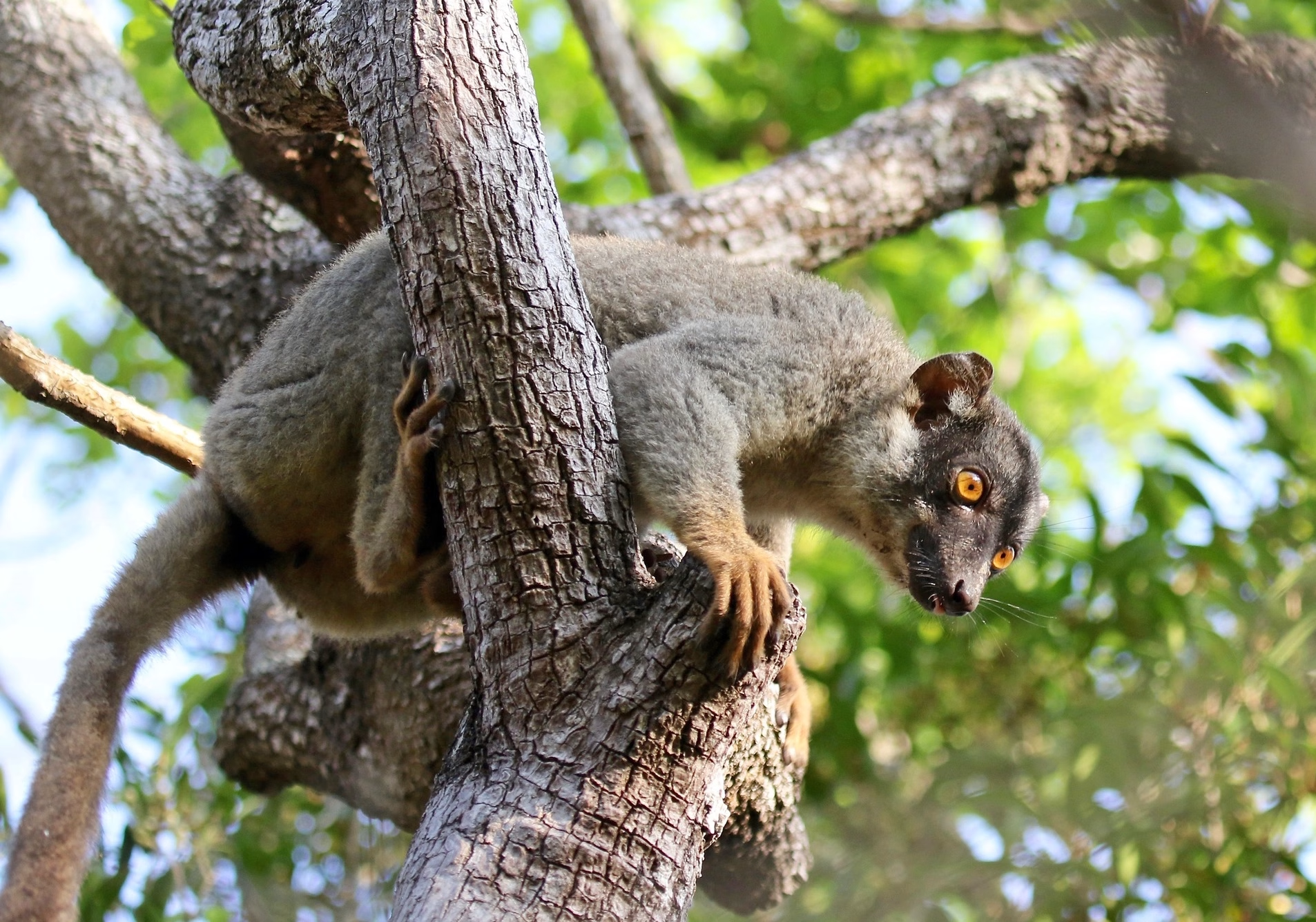
Common brown lemurs are gregarious and live in groups that have no noticeable hierarchy—unlike many other lemur species’ groups, in which females are dominant. Groups vary in size based on location. They are usually composed of as many males as females and include adults, juveniles, and infants. On average, groups contain 3 to 12 individuals. They communicate through touch, especially grooming, and by scent. Equipped with scent glands on their chests and wrists, they rub surfaces to leave scent marks. These are full of useful information for other lemurs. The lemurs also use various vocalizations throughout the day, and each one has a specific purpose. Some include calling the group together, sending out an alarm that a predator is near, and warning off a rival lemur group.

Reproduction and Life Cycle
Common brown lemurs mate seasonally, between May and July. The actual mating period only lasts two to three weeks, during which females in a group come into estrus at different times, and each is only receptive for 24 hours. To attract males, they increase their scent marking activity.
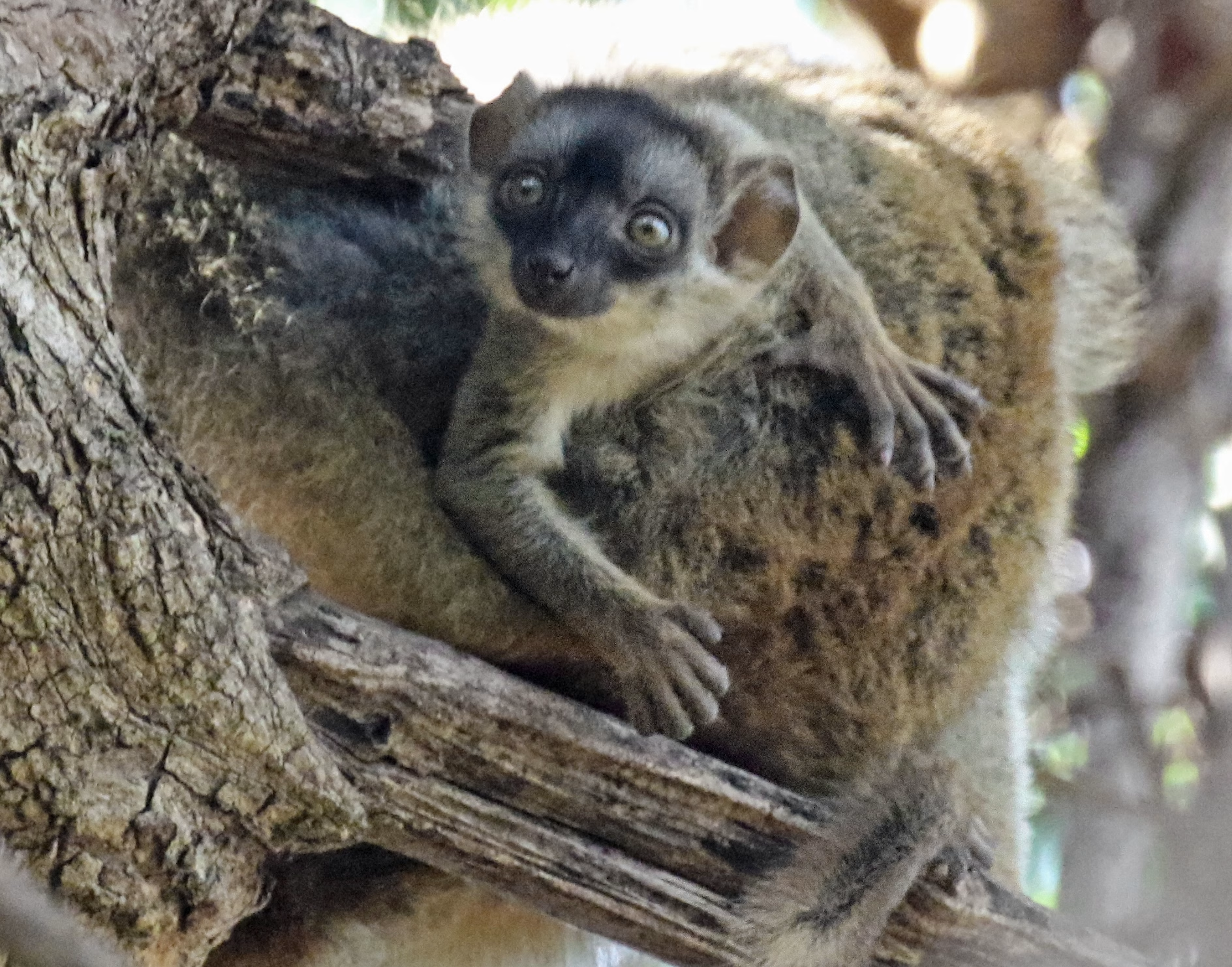
Between September and November, and after a gestation of approximately 125 days, females typically give birth to a single infant. For the first three weeks, the infant hangs onto its mother’s belly. When they are a little older and stronger, young lemurs ride on their mothers’ back. Until the babies are weaned at around seven months of age, mothers devote more time to foraging, because they need more calories while producing milk for their offspring.
Conservation and Threats
The International Union for Conservation of Nature lists the common brown lemur as Vulnerable, with the population declining. They are primarily threatened by habitat loss and hunting. Since their home range is small to begin with, rapid habitat changes put a lot of stress on these primates. As with all Madagascar’s lemurs, continued conservation efforts, especially habitat protection and restoration, are needed to make sure these orange-eyed beauties continue leaping through the forests for a long time to come.
